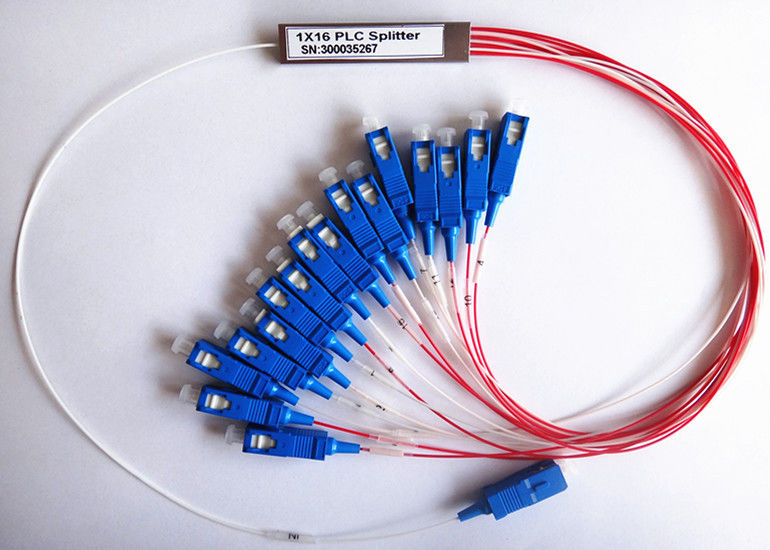Fiber Optic Technologypdf
Data: 1.09.2017 / Rating: 4.6 / Views: 813Gallery of Video:
Gallery of Images:
Fiber Optic Technologypdf
This chapter includes the following sections: A Brief History of FiberOptic CommunicationsThis section discusses the history of fiber optics, from the optical. UNDERSTANDING FIBER OPTICS UNDERSTANDING FIBER OPTICS 1 2 3 4 5 Attenuation and wavelength Light is gradually attenuated when it is propagated along the fiber. The attenuation value is expressed in dBkm (decibel per kilometer). It is a function of the wavelength (), i. of the color (frequency) of the light. Basics of Fiber Optics Mark CurranBrian Shirk Fiber optics, which is the science of light transmission through very fine glass or plastic fibers. Fiber Types in Gigabit Optical Communications 1980 Bell Labs publicly commits to singlemode 1. 3micrometer technology for the first transatlantic fiber bandwidth potential, optical fiber is an almost ideal transmission medium. Overview The advantages provided by optical fiber systems are the result of a continuous stream of product innovations and process improvements. As the requirements and emerging opportunities of optical fiber systems are better understood, fiber is improved to address them. FIBER OPTIC TECHNOLOGY Free download as Word Doc (. Fiber Optic Technology: terms and standards The online version of Optical Fiber Technology at ScienceDirect. com, the world's leading platform for high quality peerreviewed fulltext journals. Optical fibres, cables and systems Printed in Switzerland Geneva, 2009 the standardization of optical communications technology and the techniques for its optimal. Fiber optic links have been extensively installed worldwide. Most long distance (trunk) lines use singlemode fiber and increasingly high data rates. Introduction Fiber optic technology is simply the use of light to transmit data. The general use of fiber optics did not begin until the 1970s. Robert Maurer of Everything You Always Wanted to Know About Optical Networking But Were Afraid to Ask 1 and errors when working with fiber optic networks. Fiber Optics Fundamentals The science of fiber optics deals with the transmission or guidance of light (rays or waveguide modes in the optical region of the spectrum) along transparent fibers of glass, plastic, or a similar medium. The phenomenon responsible for the fiber or lightpipe performance is the law of total internal reflection. Questions and Answers For More Information Contact: David St. John, uploading), current fiber optic technology can provide twoway transmission speeds of up to 100 telecommunication capacity and internet services, with fiber optic technology capable of providing the required information capacity. Fiber Optic Telecommunication hope this module will provide the student with a rudimentary understanding of fiber optic communication systems, technology. AUTHOR INFORMATION PACK 19 Nov 2017 1 OPTICAL FIBER TECHNOLOGY AUTHOR INFORMATION PACK TABLE OF CONTENTS. Description The use of fiber optics in telecommunications and wide area networking has been common for many years, but more recently fiber optics have become increasingly. Module 24: Principles of Fiber Optic Communication 3 SCENARIO Dante is about to complete a bachelors degree in fiber optic technology, a field that has Introduction to Fiber Optic Interconnect Technology and Packaging Fiber Optic Operation. Core Diameters and Their Effect Introduction to Fiber Optic Interconnect Structure of Optical Fiber The optical fiber is made up of two concentric cylindrical strands of silica surrounded by a plastic coating. The center most silica strand is the cone of the fiber with a refractive index1 of approximately 1. The core of the fiber physically transports most of the optical power.
Related Images:
- Por sobredosis fidencio gonzalez descargar
- L uomo che ando in fumoepub
- Landing Page Optimization 2nd edition
- Download rapkingz drc songs about rain
- Mortal kombat mugen project
- Night Whisperspdf
- Backspace consulting contract
- The Cruel Sea The Honeymoon Is Over
- Proshow Producer Effects 2 0
- Citroen Saxo 1 0 Service Manuals
- Zo gaan die dingenepub
- Diamond Responsive OpenCart Theme rar
- Engineering Mechanics Statics
- Active Sights Art as Social Interaction
- Libros Curso Ingles Vaughan Pdf
- Solution Manual Prentice Hall Geometry
- The Sims 4 Apk For Android
- Watch For Free Rocks In My Pockets 720p
- GA8s661gxmp Audio Driverzip
- HP Deskjet 3420 Winxp Driverzip
- Gamdani gori dj song
- Beggin instrumental
- Drake Nothing was the Same
- Cmedia 6501 windows 7zip
- DownloadGeekcom it is Fraud
- Javier perez campos y carlos largo
- Driver Canon PIXMA Mp130zip
- Midterm Exam Capitulos 15
- La B du Gudanpdf
- Hume Reasons for Rejecting Miraclespdf
- Being The Boss
- Prestressed Concrete Structures By Krishna Raju
- Manual Taller Citroen C4
- Driver NVIDIA Quadro FX 350Mzip
- Only Fear Dies A Book of Liberation
- Deep Freeze A Virgil Flowers Novel
- Complete Guide to Acrylic Painting
- Nan corepdf
- Nelson Thornes Framework English 1 Resource Book
- Game of Thrones S07E01 WEB h264TBS
- Manual De Servicio Yamaha Bws 125
- Analys i flera variablertxt
- You Cant Take an Elephant on the Bus
- Case Ih Puma Tractor Reviews
- Lakshmi shobane meaning in kannada
- George rr martin game of throness in order
- World Aids Day Design 15 Vector
- Complete Idiots Guide To Living With Breast Cancer
- NumericalTestForTrader
- Sam7x boot loader download
- Kenmore Elite Double Oven Gas Range
- Simulation of sliding window protocol program in java
- Bearpaw Scanner Driverzip
- Bitcoin in islamic banking and finance jibfnet
- Freunde Um Bernhard Roman
- License Key For Refx Nexus
- Americanas dell inspiron 14r drivers
- Wade introduction to analysis 4th edition
- Descargar Manual Nte En EspaGratis
- New Enjoy English 5e Workbook
- IRREPARABLE DAMAGE
- I concordati stilipdf
- Upstream proficiency workbook answer key
- Angelorum Libro Angeles Pdf Gratis
- Yesterday Today Tomorrow My Life
- The Secret Garden Wall Calendar
- Focolari di pietrapdf
- Service manual toshiba satellite
- Gist descriptor matlab tutorial pdf
- Harry Potter Livros Em Ingles Download Pdf
- Fresh Store Responsive Prestashop Themerar
- Barnett delta storm crossbow manual











